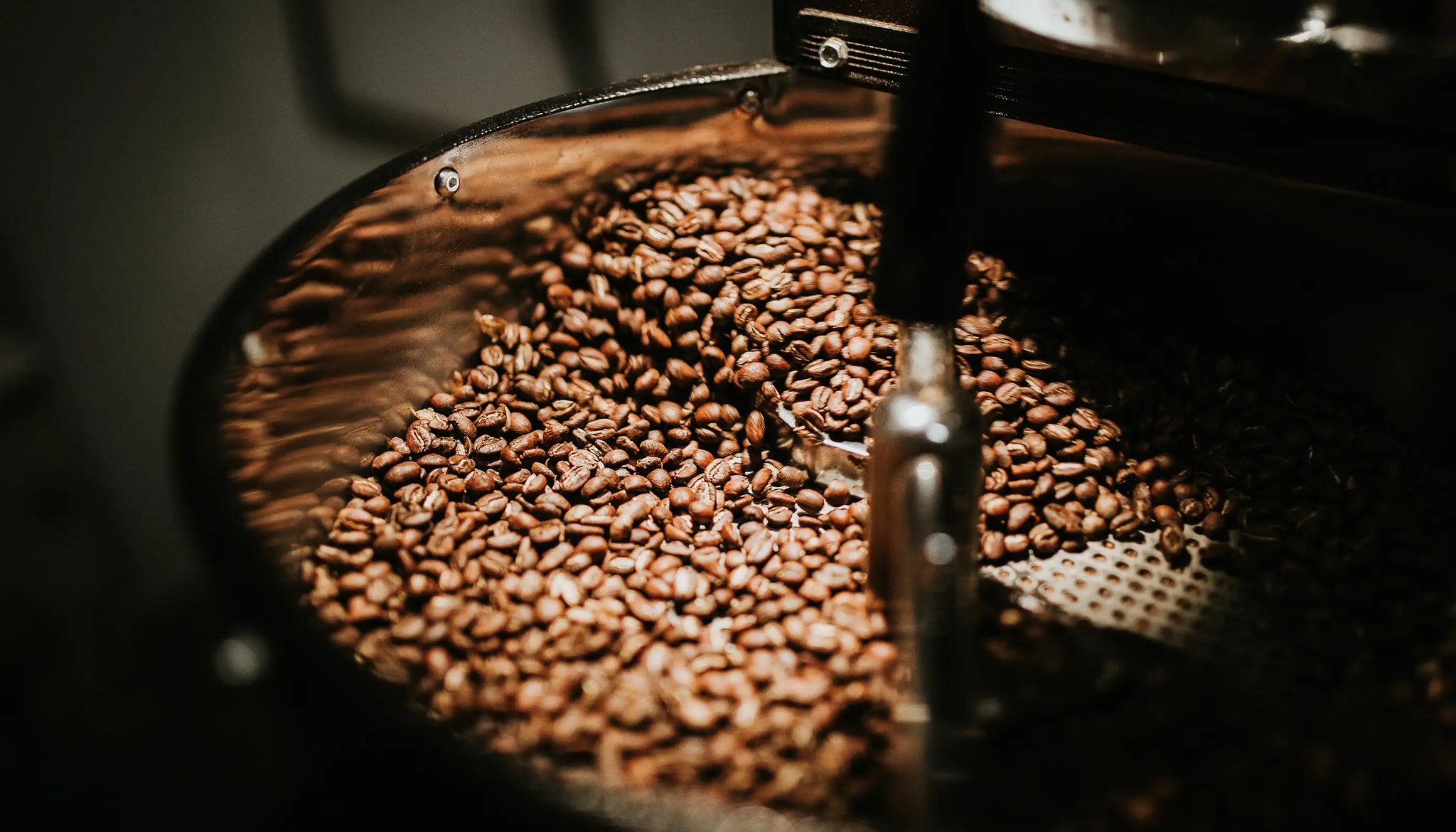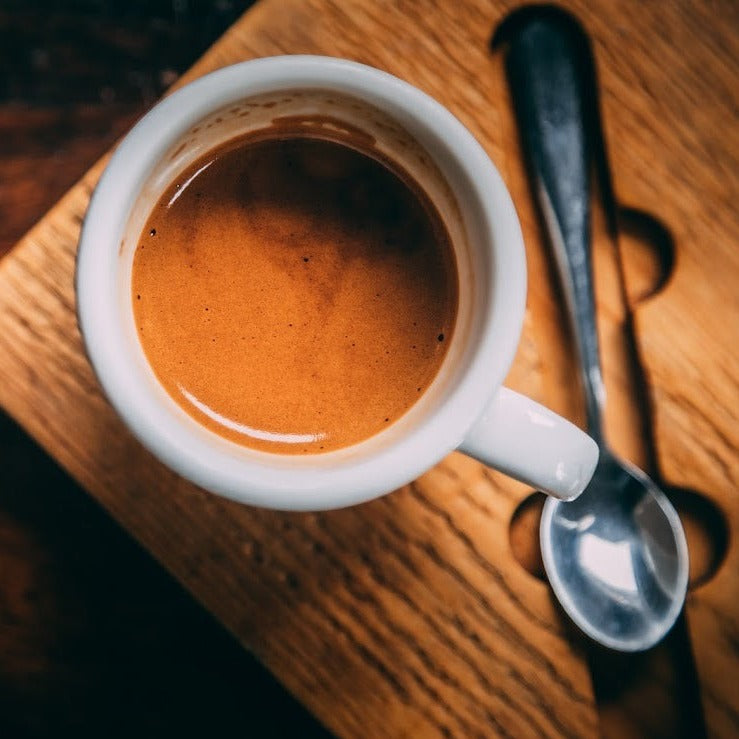SOE Single Origin Espresso – A Perfect Gift for Coffee Aficionados
SOE Single Origin Espresso – A Perfect Gift for Coffee Aficionados
Blog Article
Checking Out the Rich Tastes of Coffee Beans: a Deep Study Coffee and Blended Coffee Beans
When you check out the rich flavors of coffee beans, you reveal a complicated globe where each range brings its very own personality to your cup. As you navigate through the art of coffee and the creative thinking behind mixed coffees, you'll begin to value the subtleties that make each sip one-of-a-kind.
The Origins of Coffee Beans: Exploring Terroir and Flavor Profiles
When you take a sip of coffee, you're not simply appreciating a beverage; you're experiencing an abundant tapestry of tastes shaped by the beans' origins. Each region creates distinct taste profiles affected by soil, climate, and elevation. For circumstances, beans from Ethiopia frequently rupture with brilliant, fruity notes, while those from Colombia often tend to offer a well balanced, nutty sweet taste.
As you explore various beginnings, you'll see how terroir-- the environmental aspects influencing a crop-- plays a crucial duty - Single Origin Espresso. The same coffee range can taste significantly various depending upon where it's expanded
When you take into consideration these elements, you start to value the intricacy behind your mug. Each sip narrates of the land and the farmers who supported the beans. Next time you delight, assume concerning the journey your coffee took before it reached your hands, and appreciate those complex flavors that show its origin.
Recognizing Espresso: The Art and Science Behind the Brew
When you think of espresso, it's not just about the solid taste; it's additionally about the methods that bring it to life. Understanding exactly how various preparation approaches influence taste can change your developing experience. Let's check out the complexities of espresso prep work and discover the distinct taste accounts that make each mug special.
Coffee Prep Work Strategies
Espresso preparation is both an art and a scientific research, integrating precise techniques with a deep understanding of coffee. To begin, you'll want to pick high-grade, newly baked beans and grind them finely for perfect removal (Single Origin Espresso). The grind size is important; as well crude, and your espresso will certainly be weak, too fine, and it'll be bitter
Following, tamp the grounds uniformly in the portafilter to guarantee consistent extraction. When you secure it right into the equipment, purpose for a developing temperature level in between 190 ° F and 205 °
F.As you pull the shot, expect the perfect extraction time-- around 25-30 secs. The outcome should be an abundant, velvety coffee with a stunning layer of crema on the top. With practice, you'll master these techniques.
Flavor Accounts Explained
The world of espresso uses an abundant tapestry of flavor profiles that can boost your coffee experience. You'll observe an equilibrium of bitterness, acidity, and sweetness when you take that very first sip. Each espresso bean carries distinct notes, from floral and fruity to nutty and chocolaty. Light roasts frequently showcase intense acidity and vibrant flavors, while dark roasts existing much deeper, bolder tones.
A well-crafted mix might balance the bright notes of an Ethiopian bean with the abundant, chocolatey touches of a Brazilian bean. Welcome the trip of finding espresso's varied tastes, and you'll change your coffee routine right into an exciting experience.
Handling Approaches: How They Impact Flavor and Scent
While it might appear that the beginning of coffee beans is the most considerable consider determining their taste and fragrance, the processing methods used post-harvest play a similarly necessary duty. You'll discover that these methods can drastically alter the final taste profile of your mug.
For example, the washed process eliminates the fruit from the beans before fermentation, frequently leading to a cleaner, brighter taste. On the other hand, the all-natural process leaves the fruit intact throughout drying, resulting in a sweeter, fruitier account.
Other techniques, like honey handling, strike a balance, permitting some fruit mucilage to remain, providing an one-of-a-kind intricacy.
Each processing technique engages with the beans' inherent features, improving or muting particular flavors and fragrances. So, when you sip visit that espresso or blended coffee, bear in mind that the journey from cherry to mug is influenced not simply by beginning yet likewise by exactly how those beans were processed.
Toasting Techniques: Unlocking the Complete Prospective of Coffee Beans
Roasting methods are vital for revealing the complete possibility of coffee beans, as they change raw, green beans right into the aromatic, savory coffee you delight in. The option of toasting approach-- light, medium, or dark-- dramatically influences flavor accounts. Light roasts preserve the beans' natural level of acidity and fruity notes, while tool roasts balance sweet taste and richness. Dark roasts, on the other hand, highlight bold, great smoky tastes.
A slower roast at lower temperature levels permits for complicated flavors to establish, while a quicker roast can increase resentment. By understanding these techniques, you'll disclose a world of taste, raising your coffee experience to new elevations.
The Magic of Blended Coffee: Developing Unique Taste Experiences
Creating a special flavor experience with blended coffee can change your morning routine into an expedition of preference. By integrating various beans from different over at this website areas, you can reveal a harmony of flavors that elevate your mug to new elevations. Each blend offers a distinctive profile, stabilizing level of acidity, sweetness, and body to create something absolutely special.
When you select a mix, you're not just selecting a coffee; you're selecting a trip across diverse landscapes and societies. Trying out different mixes allows you to uncover your personal faves, whether you take pleasure in fruity notes or rich, chocolatey touches.

Tasting Notes: Acknowledging the Subtleties in Your Cup
As you drink your coffee, you could discover a range of flavors dancing on your taste, each revealing the intricacies of the beans. You might taste the bright level of acidity reminiscent of citrus or the deep, abundant notes akin to dark delicious chocolate. The sweet taste might stimulate honey or sugar, stabilizing the overall account magnificently.
Pay interest to the body of the coffee-- does it really feel light and airy, or is it complete and luscious? The finish, also, offers clues; a remaining aftertaste might hint at nuttiness or flower undertones.

Don't fail to remember to check out the distinct features of different origins, our website as each region passes on unique flavors - Single Origin Espresso. For instance, Ethiopian coffees usually existing fruity notes, while Colombian beans may showcase a more rounded sweetness. By recognizing these subtleties, you'll deepen your appreciation for each and every cup, raising your coffee experience to new elevations

Brewing Techniques: Making The Most Of Taste Extraction for every single Bean
When you discover the different developing techniques, you'll discover that each strategy can substantially affect the taste profile of your coffee. From French press to pour-over, each method essences different substances, enhancing or silencing particular notes. Utilizing a French press allows oils to stay in the brew, producing a richer preference, while pour-over highlights quality and brightness.
Temperature level and grind size likewise play essential functions. A coarser work works best for cool brews, while a fine work is optimal for coffee. Exploring with water temperature-- in between 195 ° F and 205 ° F-- can reveal concealed flavors, as well.
Do not fail to remember concerning steeping time; a fast removal can lead to sour notes, while over-extraction might generate anger. By changing these variables, you can take full advantage of taste extraction and genuinely elevate your coffee experience. Appreciate the journey of finding what approach best suits your taste!
Often Asked Inquiries
What Is the Suitable Water Temperature Level for Brewing Coffee?
The excellent water temperature for developing coffee's in between 195 ° F and 205 ° F. If you use water that's also hot, you'll over-extract flavors; also cold, and you won't remove enough. Go for that pleasant spot for the finest mixture!
Just How Does Grind Size Influence Coffee Flavor?
Grind dimension substantially affects coffee flavor. Finer grinds essence a lot more oils and tastes, causing a bolder preference, while coarser grinds return a lighter taste. Changing work dimension assists you accomplish your wanted coffee account.
Exist Wellness Conveniences Linked With Alcohol Consumption Coffee?

What Is the Distinction In Between Arabica and Robusta Beans?
Arabica beans are smoother and sweeter, usually including fruity tastes, while robusta beans are stronger with a bitter taste and greater high levels of caffeine web content. You'll see these differences in aroma and developing experience.
Exactly How Can I Store Coffee Beans for Freshness?
To save coffee beans for quality, keep them in an airtight container, far from moisture, light, and warmth. You'll maintain their taste longer if you only grind what you require right before developing.
Discovering the Rich Tastes of Coffee Beans: a Deep Dive Into Coffee and Blended Coffee Beans.
When you discover the rich tastes of coffee beans, you discover an intricate world where each variety brings its very own character to your mug.When you take a sip of coffee, you're not just enjoying a beverage; you're experiencing a rich tapestry of tastes shaped by the beans' beginnings.Roasting techniques are important for disclosing the full possibility of coffee beans, as they transform raw, green beans right into the aromatic, savory coffee you take pleasure in.As you sip your coffee, you could discover a spectrum of flavors dancing on your taste, each exposing the details of the beans.
Report this page